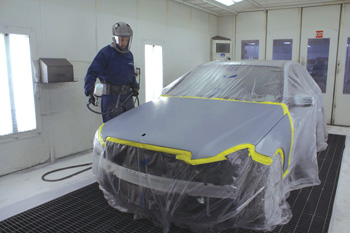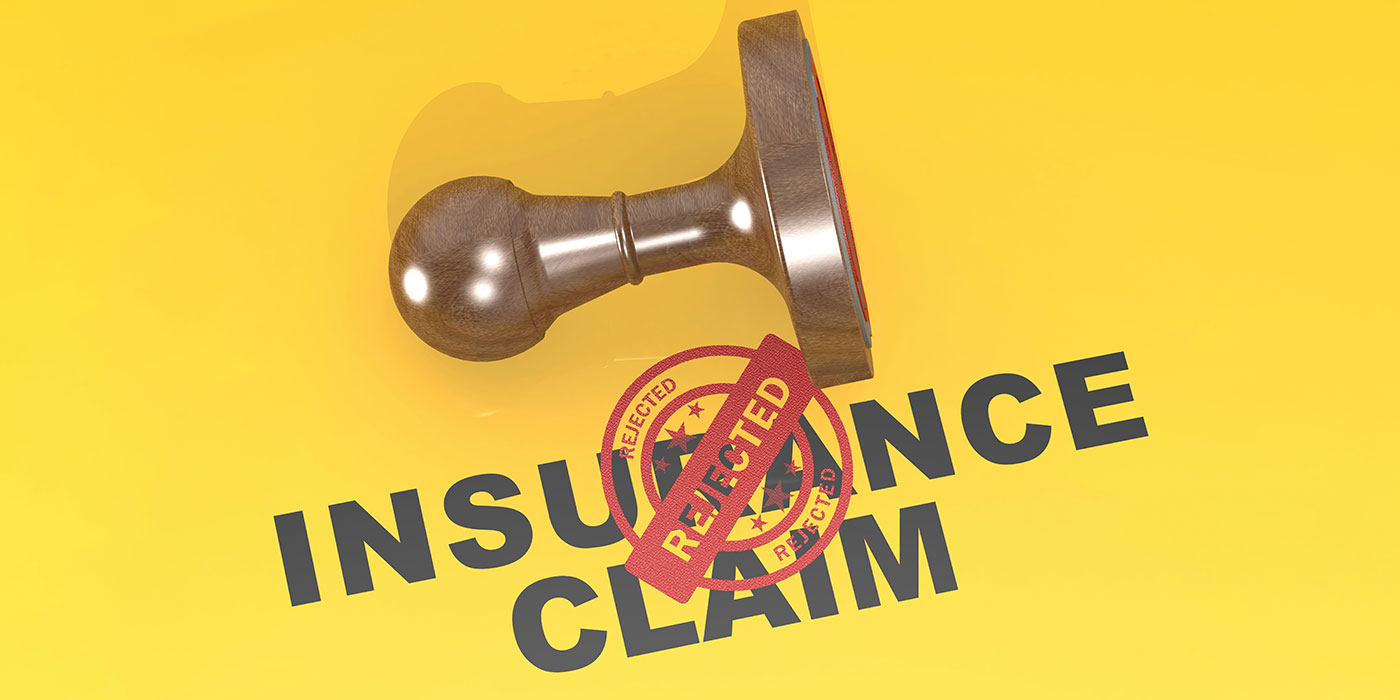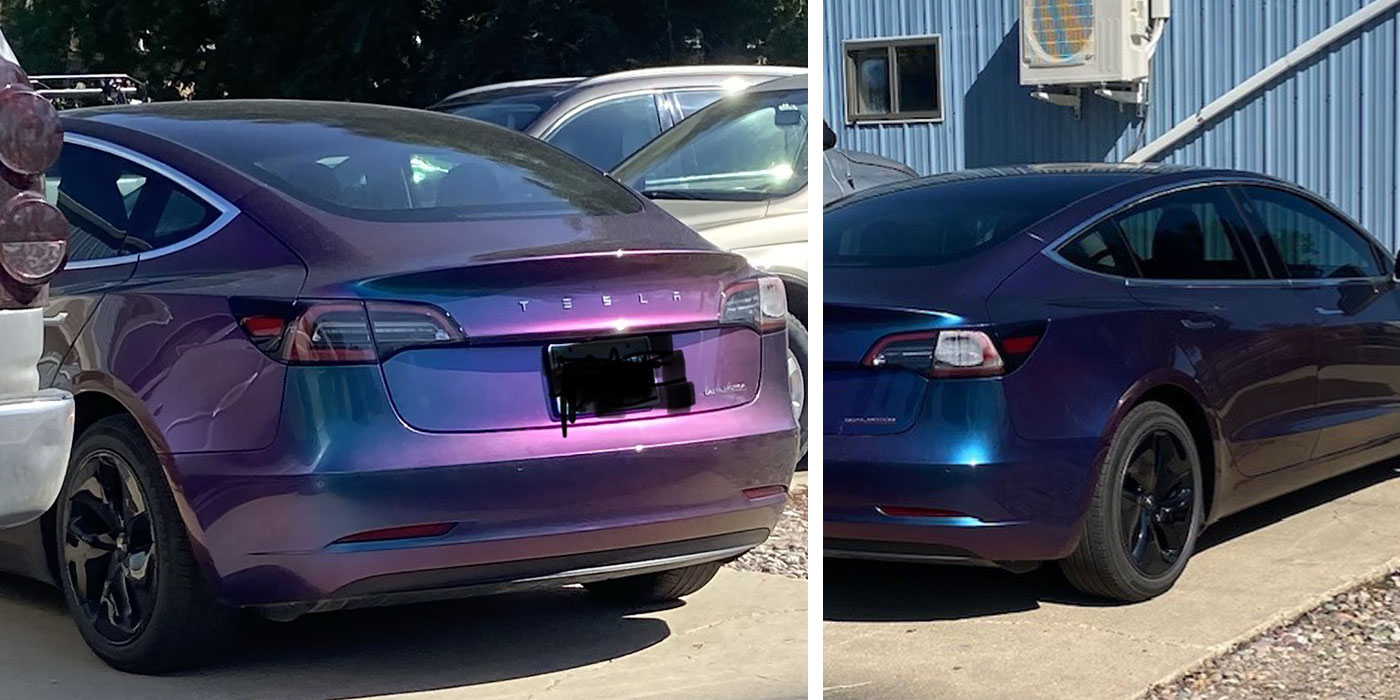 Mercedes-Benz Manhattan
Mercedes-Benz Manhattan
Location: North Bergen, N.J.
Established: 1981
Square Footage: 30,000
Owner: MBUSA
No. of employees: 10 (4 estimators, 1 production manager,
20 body/paint techs, 1 detailer)
Repair Volume/No. of Cars Per Month: 300
Average Repair Cost: $3,400
DRPs: Geico, Allstate, Chubb, State Farm
Behind the Bays
Estimating System: CCC One
Management System: CCC One/ADP
Spraybooth: 2 GFS, 1 Blowtherm
Lifts: 7 Rotary
Measuring/Dimensioning System: Celette and
Car-O-Liner
Welding Equipment: Weilander Schill, Pro Spot, Miller
Paint mixing system: PPG
Paint: PPG
Future Equipment Purchases: Just installed 4-bay prep deck, third booth, Pro Spot welder
Adam Rowley admits he hasn’t been able to make the leap yet from a normal vehicle to an electric Prius. But that doesn’t mean he’s anti-environment. In fact, he does his part to save the environment every day when he goes to work as the fixed operations manager at Mercedes-Benz Manhattan, a dealer body shop that was one of the first in its area to switch from solvent-based paint to waterborne in September 2010. They wanted to use the same paint the automakers were using in their factories, and being in the Meadowlands (a protected area), they also felt an environmental responsibility to make the change.
“Everyone has to do their bit,” says Rowley. “If everyone does a little, that makes a big difference.”
One of the differences it has made is making his employees feel better about their work environment and their personal health.
“Some stuff shops used for years and years was pretty potent, so there were lots of masks and breathing apparatuses,” Rowley says. “Those obviously don’t go away, but it’s just much nicer if you know your guys are handling a much safer product.”
Health benefits are one thing, but if painters aren’t convinced that changing all that they know will result in better quality jobs and the same or better productivity, they most likely will never buy in. Fortunately, Rowley didn’t have to fight too many of those battles.
“If you have the right guy at the right place and work with them, then obviously what can become a major issue becomes a minor issue,” he says. “We were lucky in that our two guys are very proactive and fairly young and have a lot of experience but are not too stuck in their ways and are up to trying something new. If it’s new, they enjoy playing with it to see what’s better. Plus, we had really good support from our paint manufacturer and supplier.”
That is one of the key differences Rowley, who is from England, saw in how Europeans transitioned to waterborne versus Americans. Whereas in Europe the paint manufacturer was the only entity providing training support to a shop, in the U.S. a shop is getting support from two entities: the jobber and the paint manufacturer.
“[In the U.S.] you have a middle guy and you need that partner to be on the same page as you as much as the manufacturer,” Rowley says. “If you have a good partnership with the jobber and manufacturer, things will come together.”
Rowley says the support his shop received was “more than adequate” due to the “seamless” partnership between the paint manufacturer and the jobber, making the transition to waterborne simple and easy.
“If you have really good support and good trainers who your guys trust who work with them and don’t just give them a spec sheet and a 20-minute lesson, then the transition is a piece of cake,” says Rowley. “When the trainers come in for a whole week and work alongside your guys and even paint a car or two, when they see that they’ll lead them halfway and also that they can paint as well, that’s what makes a difference.”
What also makes a difference, Rowley says, is an employer that is fully committed and willing to dedicate whatever resources it takes to make the switch.
“Hopefully the employer wouldn’t make everyone change unless they had everything ready,” he says. “If you’re not going to invest in the right equipment and give your employees everything
they need, then you will have an uphill battle.”
Speaking of equipment, Rowley says he did not have to retrofit any of his spraybooths as they were fairly new and designed for waterborne.
“If you had old ovens, you looked at how fast they could get up to temperature and their efficiency in creating heat,” he says. “Nowadays, you buy an oven based on how fast it cycles air.”
Rowley says his team does use a few hand dryers now and again for additional airflow to odd, hard-to-reach places.
Measuring productivity gains has been a little tricky, admits Rowley, in part because the spraybooths represent the bottleneck in the shop. He equates it to pouring water through a funnel: unless you open the spout up, the water won’t go through any faster no matter how big the top of the funnel is. With that said, he says flashoff times are better so the total time has decreased. The other complicating factor is the current state of the collision industry.
“The industry at the moment isn’t ‘flat out,’ so it’s one of those things where we’re definitely more efficient per job but we’re not busting out the door with work to be able to accurately measure everything,” Rowley says. “It may only be five to six minutes per car in the whole paint process, but that adds up.”
Rowley believes flash time will improve even more after they install a nitrogen system that claims to make paint land essentially dry and promises a transfer rate of more than 90 percent.
Would Rowley’s painters go back to solvent-based paints if given the choice? Rowley asserts that the answer is a resounding no. Proof is that he let them test all the old and new versions of basecoat, primer, clear, etc. Seven people in the paint department got to vote four to five times each based on the number of products tested. Out of 36 votes, 35 were in favor of the new product.
Conclusion
“Basically, depending on your size, you have to reduce your VOC emissions by law,” says Rowley. “Plus, you morally should be doing it. You have a moral obligation to the area in which you operate and you presumably live near. You also have a moral obligation to your employees to keep things as healthy as possible. If you have a choice of two products and one is healthier than the other, why would you not choose it? Whether it’s for health reasons, environmental reasons or business reasons, it’s the right thing to do.”













